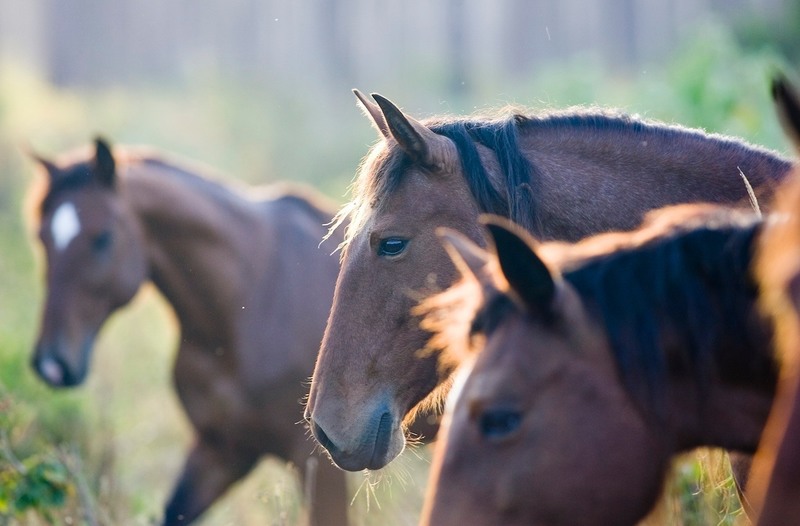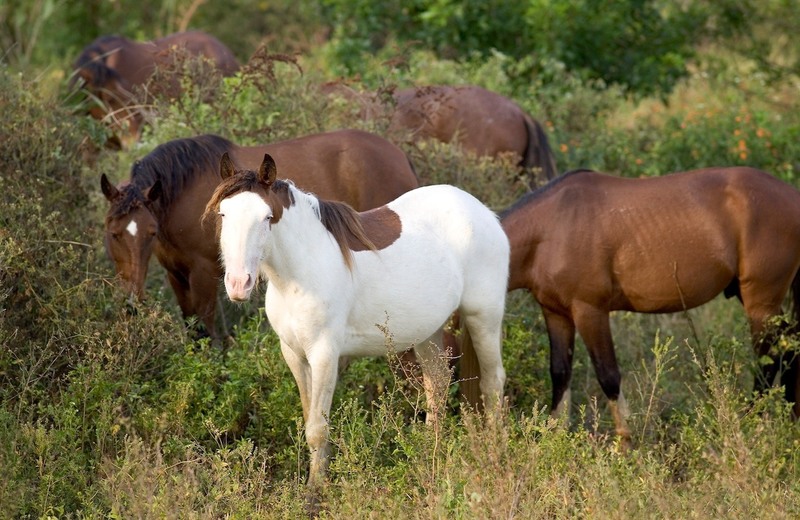
An impending storm darkens the sky above the splintered canopy of Caribbean pines. Milanne “Mimi” Rehor points out plants that once sustained the herd of wild horses that inhabited this limestone crescent in the northern Bahamas until just two years ago.
“Palm fronds. They ate the palms, and briars, and of course the grass,” she says, and then nods toward a shiny green tree on the edge of the road. “Also this. Don’t brush up against this. It’ll give you blisters. Poisonwood. But after fires, the horses used to eat this, too, once the oils burned off.”Equines long roamed the forests that blanket Great Abaco Island, but the last horse died in 2015, marking the extinction of a historically and genetically significant sub-breed of the threatened Colonial Spanish Horse. The Abaco Barb, like most feral equines, was compact and sturdy thanks to generations of surviving in the wild. The horses stood about 13.2 to 14.2 hands (54 to 58 inches) at the withers and each weighed an average of 800 pounds. Their feet were hard and well-shaped from trekking across the island’s rocky surface in search of food.
However, unlike most other wild horses in the Americas, the Abaco Barb spent generations in geographic isolation. According to equine geneticist Gus Cothran, who analyzed the DNA of 22 Abaco Barbs for Rehor in the 1990s, the horses were little changed from those brought across the Atlantic more than five-hundred years ago.
About half were blue-eyed “splash white” pintos, with belts and bonnets of white thrown against a brown hair base.
Others were roans, with ivory hairs running throughout mahogany or copper coats, giving them a faded appearance. Most were “gaited,” meaning that in addition to the four types of movements most horses use (walk, trot, canter, and gallop), they had the capacity for very smooth lateral gaits in which both legs on each side move in unison. Similar movements are seen in other horses with old roots, including Paso Finos, but not in more modern Spanish breeds.Strike up a conversation with Great Abaco Island’s long-time residents and many have childhood memories of spotting the horses during family road trips. They’re also likely to have a theory about why they disappeared. Though the Abaco Barb thrived on the island for generations, beginning in the 1960s, human actions and environmental changes weakened the herd and ultimately led to its demise. As Rehor, Director of the Wild Horses of Abaco Preservation Society, fights to bring the animals back from extinction, she’s highlighting their contentious history and uncertain future.

Nobody knows how or when the horses first came to the Abaco Islands. One story claims they swam ashore, survivors of the frequent 16th-century shipwrecks that fed the archipelago’s salvage-based economy. A second tale suggests that Loyalists fleeing the American Revolution brought their horses with them to the island. Still another, the one that Rehor favors, traces the horses to the island’s 19th-century logging operations, when companies imported equines from Cuba to haul lumber and later turned them loose.
According to Cothran, the genes indicate that any of these tales could be the reality. “What we [had] there on Abaco is the old actual colonial introduced horse rather than a more modernly introduced Spanish horse,” Cothran says. Such a clear link to the equines that were introduced to the Americas in the 15th century is rare. Most modern sub-breeds of the Colonial Spanish Horse have long interbred with released stock horses.
Though their entire genome has yet to be sequenced, the Abaco Barbs’ rare profile could hold useful information “particularly if you consider what’s going on ecologically. Perhaps you have some genes that have value in the future that would not exist anywhere else,” Cothran says, referring to climate change.
From a scientific perspective, that’s what makes their disappearance such a tragedy.
The post The Extinct Horses of Great Abaco Island May Live Again appeared first on FeedBox.